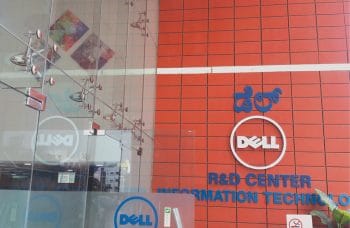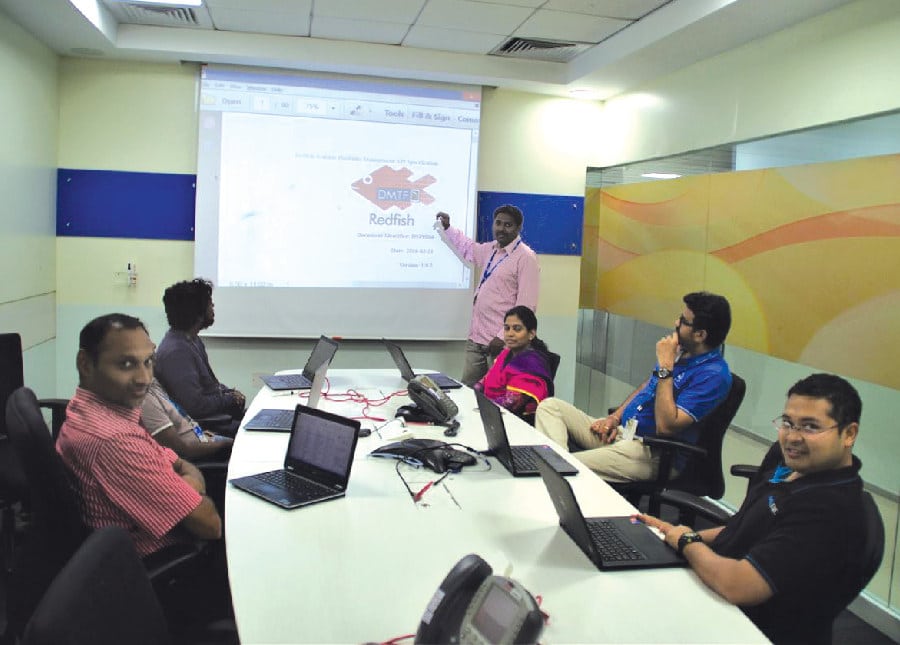The Dell Power Edge Server’s Out-of-Band management solution has been developed using various open source technologies to deliver cost-effective systems management for enterprise IT environments.
When it comes to systems management in enterprises, several time consuming tasks are involved. Earlier, embedded solutions backed by some proprietary technologies seemed efficient and effective as customers were only looking at meeting the requirements through a particular technology. But the cost and flexibility of those solutions have today become the key factors driving customer decisions on what technology to opt for. The open standards, open architecture and open source technology based solutions come with improved time-to-market as well as enhanced affordability and scalability. And they come without the burden of vendor lock-in and the resultant huge costs.
Much before the market was fully ready for open source solutions, Dell opted for open standards and open architecture for its brand, PowerEdge. This is designed with ‘open, affordable, reliable and scalable’ architecture, and is aimed at helping enterprise customers manage their servers through Out-of-Band (OOB) management. Known as iDRAC, the in-house technology for PowerEdge servers offers efficient and effective server management without requiring any operating system.
The engineering team at Dell EMC has designed the integrated Dell Remote Access Controller (iDRAC) with the LifeCycle Controller (LC) as an intelligent subsystem within servers to provide agentless OOB monitoring, management, configuration and updates. The company also provides IT administrators with its Chassis Management Controller (CMC) to deliver real-time monitoring of consolidated multiple blade servers and shared components in a Dell chassis.
Each of the Dell PowerEdge servers is shipped with the iDRAC, which leverages open standards and open source technologies. This helps the company offer faster development, reduced time-to-market and improved scalability over any proprietary and closed source development.
“Open standards and open source solutions make our solutions fit into the theme of RAS (reliable, affordable and scalable). We always want to win customers based on the value and efficient technology that we provide, not to lock in customers with proprietary solutions,” says Ramakrishna Rama, director of software engineering, Dell.
Rama is leading the embedded management development team in India for Dell EMC that works on OOB management systems. The team utilises the Linux kernel and various open source drivers to provide efficient systems management to enterprise customers. “We build superior systems management capabilities on PowerEdge with a combination of our own and open source code to make it easy for enterprises to deploy, configure, update, monitor and maintain their server models in an almost seamless manner. This significantly reduces the cost involved in IT infrastructure deployment and operations, when compared to complete proprietary or closed solutions,” Rama says.
Unlike in the past, when IT admins were required to perform firmware updates by physically accessing several different servers at their premises, the present environment needs a self-regulation system with built-in intelligence and automation capabilities. This can become possible by using an advanced product mix such as the iDRAC with LC and CMC by Dell.
Server lifecycle management without any agent participation
The iDRAC with LC technology supposedly gives enterprises a single way to manage their business-critical server or IT infrastructures, at all times, from anywhere. The technology enables administrators to remotely perform lifecycle management of Dell PowerEdge servers from any location, without requiring any agent participation. Moreover, it accomplishes the given tasks regardless of the operating system or the presence and state of the hypervisor.
“Our solutions come with interoperability and, thereby, increase their market footprint. Along with reducing the cost of development and time-to-market, we have built the OOB management solution based on open standards/open source interfaces to enable customers an easy way to integrate applications and environments,” Rama told Open Source For You.
Rama works along with Ravindran Chandra, a senior engineering manager, and Raveendra Reddy Padala, platform software staff engineer, at the Dell India R&D Centre in Bengaluru to improve OOB management for enterprise customers. “The blend of solving customer problems with our own, and the open standards based solutions used for this is the engineering culture of our team,” says Chandra.

Open source technologies are the key to success
Dell has been using various open source developments to make its OOB management solution compatible for a large number of enterprise customers. The iDRAC, LC and CMC have the Linux OS that hosts the entire embedded management stack running on a dedicated SoC (System-on-Chip) residing on a server motherboard. Likewise, the OOB management software supports DMTF (distributed management task force) specifications that include WS-MAN as well as Redfish, both of which provide a programmatic interface for any application to interact with iDRAC and CMC. The hardware platform management level, on the other hand, is based on open standards IPMI (intelligent platform management interface) specifications to enable connectivity and management of various on-board devices and sensors. “The beauty of the solution is standard and custom-specific hardware implementation that is exposed via standard interfaces. Dell takes care of bridging these two through its own software,” notes Raveendra Padala.
Challenges transform into opportunities
As is the case when constructing any complex solution, the development of the OOB solution also presented a few challenges for the engineering team at Dell. The first challenge was identifying the right standards, specifications and technologies around systems management. The idea was to design and implement Dell’s core solution with its own added capabilities that could be exported via standard interfaces using open source or Dell software.
“The primary challenge was with open source, since many community-based solutions are not fully up to enterprise standards,” Rama says, adding that the change management through open source solutions was also not in line with actual market dynamics. The engineers behind the OOB monitoring also found it tough to build a complete solution or software stack using open source technologies due to various IP constraints. However, Dell considered all this as an opportunity and planned a strategy to address customer needs. “We worked with the community to have patches for the open source solutions based on real-time field or customer use case situations,” reveals Raveendra Padala.
Dell engineers contributed to mod-WSMAN and up-streamed various patches to the original code. The same approach has also been followed in the case of Redfish DMTF specifications and related open source. The engineering team has also brought in some OEM extensions of the standards, to add features that are not available in traditional standards.
Dell India contributes over 40 per cent
While the iDRAC with LC and CMC products that are part of the OOB management solution was the brainchild of global Dell engineers, the team based in India accounts for more than 40 per cent of the worldwide development of this solution. This highlights the Dell India team’s product engineering skills related to IP creation, as well as its capabilities in contributing to the open source community.
Contributing back to the community
While consuming open source software, Dell’s OOB solution teams in India and in the US contribute to nearly 50 open source packages by interacting with several maintainers directly. There are product development teams that identify the potential of available open source packages and pick the most efficient ones to enhance server manageability. Further, Dell has created an internal server software open source software review (SSOR) team that includes volunteers from different project units to oversee existing open source integration activities. The same team is also responsible for evaluating requests for new open source package integration.
The group of engineers under the SSOR team prototype and evaluate open source package usage in the product. Also, they archive the requests for evaluation and all the related material for future references. It is mandatory to stream the open source code used in the existing products for community consumption within 30 days of the product GA (general availability) release. “We contribute to open source through various proposals as well as release the code of some of our in-house developed modules catering to open standards frameworks. We also raise issues and propose various solutions by participating in many open source communities working on systems and server management standards, Linux, Web servers and embedded tools used for manageability,” Rama states.
So, in this way, Dell not just consumes open source but also contributes back to the community with its innovative solutions.












































































